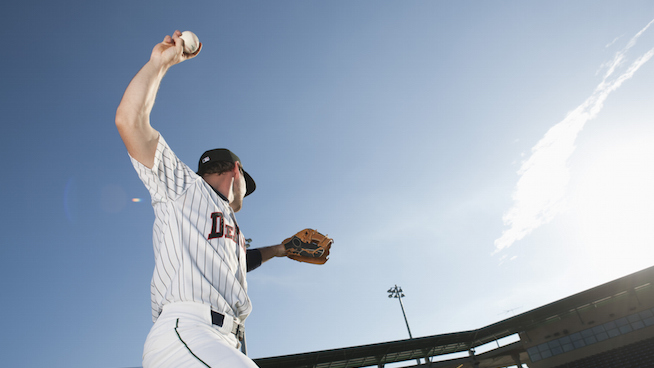
By Alex Ling |
Throughout baseball, the one thing that has come to the forefront of the baseball world is pitching velocity and ways to improve it. As many players try to fulfill their dreams the one issue stopping them from getting to when they would like to is their velocity and their overall ability to throw hard.
This problem has led to the invention of new training programs, and one of those is weighted ball training. Although weighted ball training can be beneficial in some minor ways, pitchers should not use them, because it does not strengthen the entire body. Also, most players do not have enough knowledge about the physics behind it in and weighted ball training can put too much stress on the arm, which can lead to injury.
In Major League Baseball, the majority of players do some form of weight training. Along with this some choose to do a weighted ball program that in turn helps strengthen their arms and gets them ready to pitch at high velocities. One major weighted ball program that is used throughout the United states is Driveline baseball, and although this has been a very good method for pitchers weighted balls are different for everyone and sometimes result in injury.
Pitching is a total body movement that requires immense leg and total body strength in order to throw at a high velocity. With weighted ball movements, the main priority is to train the upper body. As a result pitchers doing these programs only strengthen the arm rather than strengthening the entire body.
Although this is knowledge spread throughout the baseball community, a study by Mike Reinold, “Are Baseball Velocity Programs to Blame for the Rise in Pitching Injury”, showed that “the layback of the arm caused by weighted balls actually damage static stabilizers that are supposed to keep the arm healthy.”1 Overall the use of specifically strengthening the arm can eventually correlate to overuse of the arm and could end up resulting in injury. Also, being arm dominant throughout the delivery could throw off the timing of mechanics needed to be safe while pitching.
Second, weighted ball programs are very complicated and have a high risk of injury. Most people who go into weighted ball programs either do not understand the risk associated with throwing heavy balls, or do not know enough about the science behind the training in order to help increase ball speeds while keeping their arm healthy. Overall this lack of understanding can translate to the field in mechanics and overall knowledge on how to use their arm properly. According to Reinold “we are overdosing on velocity programs including weighted balls”. Along with this coaches are implementing weighted ball exercises, “on a timely-basis rather than individualizing the dose for each player.”1
Finally, weighted baseball training can put strain on the joints that allow you to throw. In the same study by Reinold there was a conclusion that the amount of force on the arm was significantly higher with 4oz balls than when throwing 5 oz balls. Also, accompanying the stress levels placed on the arm during 4 oz throws, the overall should external rotation range in participants throughout the program had increased.1 This may have been the biggest contributing factor to the injury rate concluded during this study.
To conclude, the risk pertaining to weighted baseball training is more than the benefit that can be achieved. Overall weighted baseball training does not give teach hard work and does not develop enough total body strength in order to throw at a high level. Along with this weighted baseball training puts too much stress on the stabilizers of the arm, and the knowledge needed to perform this is to complicated in order to stay healthy and to have fun as a baseball player.
Alex Ling is a student at Valley High School in West Des Moines, Iowa. He has been an avid fan of baseball since the age of 5 and currently continues to pursue his baseball and academic goals.